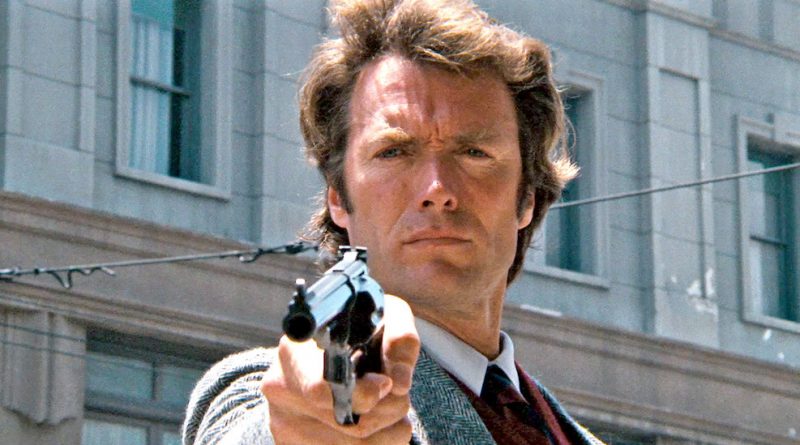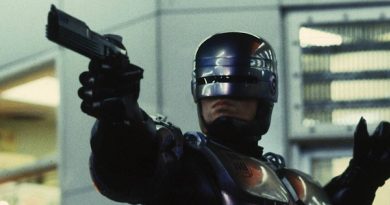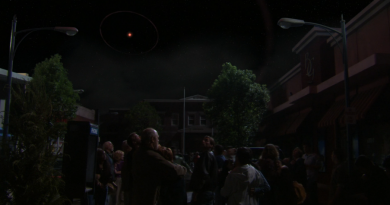Where is Inspector Callahan?
The 1971 film Dirty Harry explores the role the police in civilized societies where civility is not guaranteed. A key theme in the film is the indulgence of criminals at the expense of maligning the police. Furthermore the film highlights the impossible problems that the police are tasked with addressing. Spoilers below.
Who is Dirty Harry?
The titular character “Dirty Harry” is a nickname given to the fictional Detective Harry Callahan of the San Francisco Police Department. Callahan is simultaneously a caricature of and an idealized version of a police officer. He’s confident and direct. When confronted with situations where he’s addressing politicians he speaks his mind and doesn’t pull punches. Oh and he’s packing a Smith & Wesson Model 29 6″ .44 Magnum. Throughout the course of the franchise many a criminal meets their fate via the hand-cannon wielding Callahan.
The film shows a maniacal sniper, Scorpio, shooting his victims from roof tops. The Killer is demanding $100,000.00 (nearly $700,000 adjusted for inflation.) Callahan is tasked with apprehending the perpetrator. It’s alleged that “Dirty Harry” got his name because, “he doesn’t play any favorites. Harry hates everybody.” As the viewer continues it becomes clear that although Harry is terse he really isn’t a misanthrope.
Callahan gets partnered with a new detective Chico Gonzalez. Gonzales describes to Callahan his college education where he studied Sociology and boxed, light heavyweight. Callahan counters: “Just don’t let your college degree get you killed. ‘Cause I’m liable to get killed along with you.”
Callahan’s .44 Magnum.
Upon intervening in a bank robbery, Callahan shoots all the robbers. As Callahan approaches the sole surviving perpetrator it becomes clear the man is wounded but not mortally. As the man reaches for his shotgun, Harry quips:
I know what you’re thinking: ‘Did he fire six shots or only five?’ Well, to tell you the truth, in all this excitement, I’ve kinda lost track myself. But being this is a .44 Magnum, the most powerful handgun in the world, and would blow your head clean off, you’ve got to ask yourself one question: ‘Do I feel lucky?’ Well, do you, punk?
Inspector Callahan, Dirty Harry 1971
The Model 29 becomes Callahan’s talisman, as was Arthur’s Excalibur. In the world of wheel-guns of the 1970s the cache’ of the 44 Magnum meant a lot when serious guns only held six rounds.
Every Dirty Job that Comes Along…
As Callahan and Gonzalez search the city for the shooter they get diverted by a suicidal man on a rooftop who was mistaken for the shooter. Harry mounts the Fire Department’s cherry picker apparatus and goes to speak with the suicidal subject.
After bemoaning the mess jumpers make, Callahan baits the man to attack him. Harry knocks him out and delivers him to waiting firemen below. Callahan then reveals why he has his nickname. “Now you know why they call me Dirty Harry. Every dirty job that comes along.”
The Problem of Crime.
The problem presented in Dirty Harry is not one of constitutional restraint on Law Enforcement in a vacuum. The question raised is “What is expected of Law Enforcement when the law fails?”
The shooter kills a 10 year old boy. Callahan almost insensitively asks anyone on scene who the boy was. The boy’s mother pipes up and identifies the victim. There’s an awkward moment then Harry observes the carnage.
Unsatisfied with the city’s response the killer decides to up the ante. He kidnaps a teenage girl and buries her with a limited supply of air. Now with the killer demanding $200,000 the Mayor elects to pay the ransom.
Callahan is selected as the bagman. The killer double crosses Harry and tries to kill him and take the money without divulging the girl’s location. Harry narrowly escapes after a severe beating, and the killer leaves with a stiletto in the thigh. Gonzalez is not so lucky and ends up in the hospital with a gunshot wound.
A Crisis of Conscience.
By this point in the film, the killer has demonstrated that he is a dangerous psychopathic menace to society. He kills without hesitation and for his own mental pleasure.
With only minutes remaining before the hostage suffocates, Callahan and another detective track the killer to a football stadium where he works and lives. A brief foot chase terminates as Callahan shoots the perpetrator in the calf of his already injured leg. Harry without hesitation questions the killer. “Where’s the girl?” The killer demands an attorney. As Harry unrelenting continues to insist for the girl’s location. The killer chastises Callahan for not providing an attorney.
Callahan then tortures the killer, stepping on his injured leg. Apparently the torture worked. Police find the girl, but too late, they exhume her lifeless body.
Checks and Balances.
After failing to recover the girl alive, the District Attorney determines not to prosecute due to Callahan’s violation of the perpetrators rights in the apprehension, interrogation and gathering of evidence associated with the kidnaping. Harry warns the DA, he will kill again. “He likes it.”
Callahan starts trailing the suspect. The killer pays a leg breaker to beat him up. After the beating he goes to the media and claiming police brutality and fingers Callahan as the perpetrator. Callahan is ordered to leave the perpetrator alone and discontinue any surveillance.
The Final Demand.
Free to roam society the killer takes a busload of school children hostage. Now demanding $200,000 and a fueled jet. The Chief asks Harry to deliver the money again, but this time he refuses. He chastises the brass for failing to stop the threat when they’ve had the chance.
Callahan refuses to placate the killer any longer and intervenes. After separating the killer from the bus and children at an industrial site, a shootout ensues. The combat finally escalates to another hostage situation. Harry prevails with marksmanship and resolve.
Autodidact vs. College Automaton.
Life experience is the currency of competence in Law Enforcement. The film aptly demonstrates this reality. A modern film might exposit that a hero has a number of college degrees obtained at prestigious universities. It is unclear if Callahan ever obtained a college education, but it is certain that he doesn’t respect one. Callahan’s competence wasn’t gained in a classroom. Callahan was forged into a tough, cynical weapon against evil by hard work in the fire that is a crime ridden city.
This point is exceedingly prescient even today. In modern policing many leadership opportunities are heavily based on the presence of ANY college degree. As a result experienced officers are overlooked for leadership in preference for inexperienced but college educated officers regardless of competence.
Life on the Edge of Order and Chaos.
Dirty Harry is a film that highlights very real issues. When released in 1971, the US had been dealing with significant anti-police sentiment. The film details this, we see anti-police graffiti. The antagonist capitalizes on the zeitgeist throughout the film.
Scorpio is an exceptionally evil villain. The scenario that Callahan encounters is extreme, but not hyperbolic. Police deal with bad scenarios all the time. Often there are no “good” solutions. We live in a word where murder, terrorism, and extortion exist. And it is not uncommon for police critics to argue that police problems can be solved without violence. It is equally common for critics to argue that if officers would take additional risk bloodshed could be avoided. “Everyone’s a pro from the couch.” After the payoff fails, what is Callahan to do? Stop looking? Allow the girl to die?
One thing is clear: Callahan would never be tolerated in modern policing. But the observer should ask themselves: if it were your city where a killer was on the loose, If it were your daughter suffocating, buried alive, Would you want Inspector Callahan on the case?



